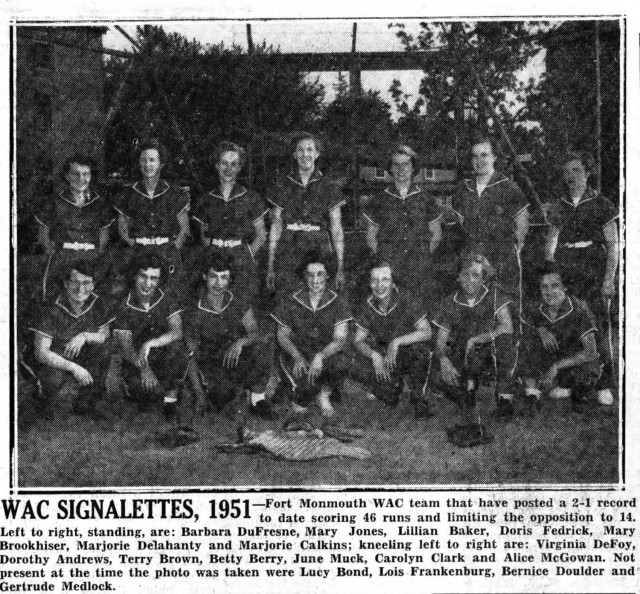ABERDEEN PROVING GROUND, Md. —June is prime-time for baseball, and the Army and baseball have always been great partners. Summer brings Military Appreciation Nights to minor league games, like the one at Aberdeen’s Ripken Stadium on July 1, but the link between goes back much further. In fact, a “Special Baseball Commission” established in 1905 to document the development of baseball attributed its invention to West Point graduate and Civil War veteran Abner Doubleday, despite a lack of evidence, and this myth of baseball’s founding continues today.
Soldiers were playing baseball as early as the Civil War, and it remained a popular pastime on bases around the country.

After World War II, baseball surged in popularity across the nation, and this included Army posts. At Fort Monmouth, New Jersey, the Signaleers played baseball on the main post, boasting frequent wins, and there were also softball teams including the WAC Signalettes and teams fielded by satellite posts such as the Camp Coles Laboratory. Competitors included other Army installations, Navy teams, municipalities, businesses, colleges, and even the New York State prison team (from even the infamous Sing Sing).
In late 1950, just in time for Christmas, the world of Fort Monmouth baseball was given a gift in the form of newly-drafted New York Yankee pitcher Ed “Whitey” Ford, who was just coming off the Yankees pennant drive and winning the final World Series game in 1950. He had joined the Yankees team in mid-season. 1951 saw the Signaleers win 42 games against only 10 lost, though they were eliminated in the third round of the 1951 First Army Baseball tournament. Their winning record and big names helped draw crowds of up to 4000 to see the Fort Monmouth Signaleers play. The WAC Signalettes also had a good 1951 season, coming in second in the First Army Softball championships.
The 1952 season was even more successful for the Signaleers, led by Ford, with a record of 41-9, who went on to place second in the sixth annual First Army Baseball tournament, losing to Fort Dix. The first three tournaments were won by the Fort Monmouth team, who hoped to reclaim their title from the Fort Dix team who had won both the 1950 and 1951 tournaments. Part of that success could be attributed to the other well-known names, including civilian manager George “Mule” Haas, who had spent 19 major-league season with the Philadelphia A’s and the Chicago White Sox, and the other draftees on the team with major and minor league experience, including Al Stablefeld, Johnny Walsh, Ed Nietopski, Emil Chaillott and John Lipari.

Ford was discharged from the Army in November 1952, with plans to rejoin the Yankees for spring training in 1953. He played 20 games as pitcher and 20 games as an outfielder at Fort Monmouth, and spoke about the difficulties of Army life. According to Ford, “Army life was rough. Would you believe it, they actually wanted me to pitch three times a week.” He went on to have a Hall of Fame career, winning more games than any other Yankee pitcher, and showed his mettle during World Series games, earning his nickname as “Chairman of the Board.” He won the Cy Young award in 1961, and was elected into the Baseball Hall of Fame in 1974.


Social Sharing